OSHA's HazCom Standard - Your Labeling, Pictogram, SDS & Training Compliance Guide
Companies have a legal obligation to maintain a safe work environment(opens in a new tab) for all employees, and they use a variety of different strategies to protect their workers and minimize the risk of harm.
All companies rely on the Hazard Communication Standard(opens in a new tab) (HCS), or HazCom, to uphold safety from hazardous chemicals in the workplace. Implemented by the Occupational Safety and Health Administration (OSHA), HazCom includes requirements meant to protect chemical manufacturers and users from risk.
What is a hazardous chemical?
Hazardous chemicals are substances that create physical or health-related hazards(opens in a new tab) for workers. These substances include acids, flammable liquids and other toxic solvents, all capable of harm through contact with workers' skin or by inhalation.
All hazardous chemicals are categorized into three classes under the HazCom standard:
- Physical hazards can harm workers through forces like fire, corrosion and explosion.
- Health hazards include carcinogens, reproductive toxins and respiratory sensitizers — all chemicals that harm employees when inhaled, ingested or put in contact with skin.
- Environmental hazards are chemicals that can harm organisms or the atmosphere.
Employers are responsible for identifying hazardous chemicals in the workplace and communicating all appropriate information to on-site workers via labeling chemicals, creating safety data sheets (SDS) and providing regular employee training.
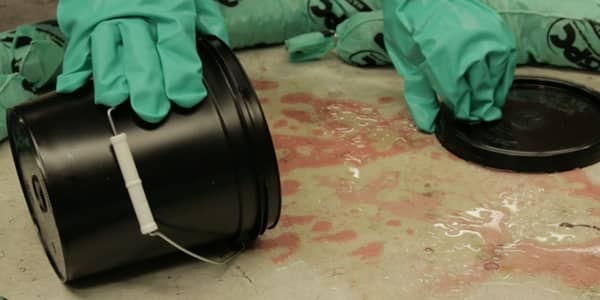
Hazard classification
OSHA uses specific criteria to categorize hazardous substances and determine their potential to cause harm. These standards help employers better understand certain chemicals and provide opportunities to train employees in safe-use policies.
HazCom regulations outline various standards for employer training and employee operations for chemical labeling and use. OSHA also provides Permissible Exposure Limits(opens in a new tab) (PELs) — maximum allowable chemical exposure levels — to further classify chemical hazards. To help all workers avoid the effects of chemical ingestion or blood toxicity, OSHA's respiratory protection standards(opens in a new tab) and bloodborne pathogen standards(opens in a new tab) also outline necessary safety precautions when handling chemicals.
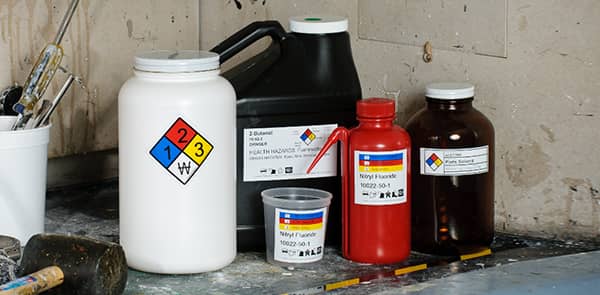
Hazards Not Otherwise Classified (HNOC)
OSHA also outlines requirements for Hazards Not Otherwise Classified(opens in a new tab) (HNOC), which covers any materials or substances that don't fit within the categories of physical, health or environmental hazards. HNOCs may still pose a personal safety risk but haven't been specifically categorized within OSHA's guidelines.
When a substance is classified as an HNOC, employers might still provide workers with information about potential hazards. This includes steps workers should take to protect themselves and others when using the substance, such as use of personal protective equipment(opens in a new tab) (PPE), safe handling procedures and exposure monitoring.
OSHA Hazard Communication Standard vs. Globally Harmonized System (GHS)
The Globally Harmonized System of Classification and Labelling of Chemicals (GHS) was established by the United Nations as a system for both classifying and for specified pictogram formats. Though similar, GHS is different from OSHA in several ways.
While GHS maintains a globally recognized system for labeling chemicals and hazardous materials OSHA's HazCom is specific to the United States. GHS is also more comprehensive in its approach to chemical classification, including specific criteria for substance and mixture definition. By contrast, HazCom relies on OSHA's PELs to determine the level of acceptable exposure.

OSHA hazard communication standard requirements
HazCom sets requirements for employers using chemicals in the workplace. These requirements identify acceptable labeling, employee training, PPE protection, emergency response procedures and best practices for chemical ingredients disclosure and SDS use.
Labeling
HazCom requires companies to label all containers of hazardous chemicals with proper HazCom labels. These labels should include the chemical's name, manufacturer information, hazard warnings, applicable HazCom pictograms and all other appropriate data.
Many workplaces use a combination of HazCom and National Fire Protection Association (NFPA) labels to fully inform employees of a chemical's hazards and safe-use policies. While HazCom labels provide context on a chemical's name and manufacturer warnings, NFPA labels offer additional information about a substance's fire or explosion potential.
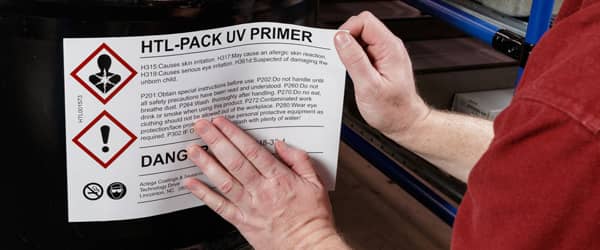
Training
HazCom training must be provided for all construction workers and include information about all related physical and health hazards. The same training should offer information on how to control chemical exposure, including the use of PPE.
Employees should also know how to respond in the event of a chemical spill or other chemical-related emergencies. This includes information on how to use spill kits or other emergency response equipment, and procedures for reporting accidents.

Disclosure and Safety Data Sheets (SDS)
Employers must inform workers about the hazardous chemicals they may be exposed to in the workplace. This communication can be done by labeling containers with hazardous substances or providing employees a list of hazardous chemicals in the workplace.
Employers also need an SDS for each hazardous chemical within the workplace. Each SDS must be prepared by the chemical manufacturer with information about the chemical's properties, hazards and safe-handling procedures. Companies must make each SDS readily available for employees to read, with either a physical or digital copy.
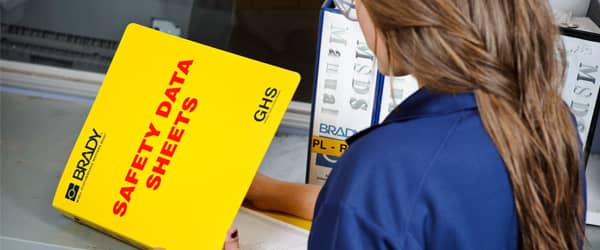
Updates to the OSHA Hazard Communication Standard
OSHA regularly updates HazCom documentation to reflect the latest changes in hazard communication and chemical safety. The most significant HazCom update is the 2012 adoption of GHS protocols(opens in a new tab) to improve the consistency of hazard communication worldwide and provide workers with better access to relevant chemical information.
The GHS update to HazCom standards included new practices for standardized hazard classification — a system for organizing chemicals based on their health and physical hazards. Other updates included new standards for easy labeling and required information for manufacturer safety data sheets.
Where does the Hazard Communication Standard apply?
The HazCom standard affects various stages of the supply chain, from chemical manufacturing and use to disposal.
Manufacturers are first responsible for evaluating the hazards associated with each chemical they create. They should prepare safety data sheets that include information about each chemical's properties, hazards and safe-handling procedures.
Employers are responsible for making each SDS available for employees and for properly communicating a chemical's hazards. Employers should also provide employees with proper training on how to use wire labels, electrical labels and other label types to appropriately identify each chemical in the workplace.
The HazCom standard applies along the entire supply chain and requires participation from manufacturers, importers, distributors, employers and employees. Chemicals delivered to construction sites, manufacturing facilities, laboratories, hospitals and retail stores all require proper handling. Labeling, signage and training are all essential HazCom components, no matter where chemical use takes place.
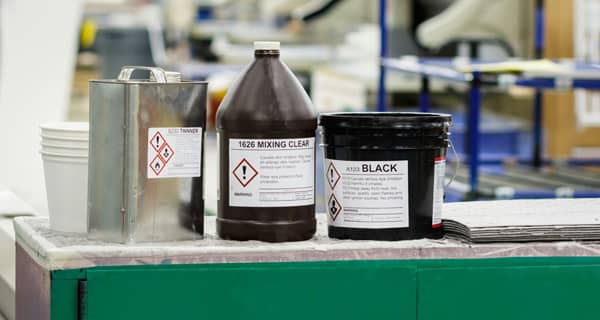
HazCom Training
There are several training opportunities and resources available for business owners, contractors and individual employees who want to learn more about proper HazCom procedure. HazCom training options include:
- The OSHA Training Institute:(opens in a new tab) The OSHA Training Institute
- The OSHA Outreach Training Program:(opens in a new tab) The OSHA Training Institute
- OSHA On-Site Consultation:(opens in a new tab) The OSHA Training Institute
- The OSHA Training Institute: A variety of universities, associations and private training companies offer training courses on HazCom standards and other OSHA regulations.
OSHA Penalties for not following the HazCom standard
Organizations that don't follow HazCom standards can be subject to stiff fines and penalties from OSHA. According to OSHA, these fines can reach $15,625 per violation. If the violation isn't resolved past OSHA's scheduled abatement date, the same violation can create an additional $15,625 fine each day. Willful or repeated OSHA violations can result in fines up to $156,259.
Employers who don't comply with HazCom standards may also face legal action from people who are harmed after exposure to hazardous chemicals in the workplace.
A workplace in violation of HazCom standards can also face penalties from the American National Standards Institute (ANSI) and other organizations that outline workplace safety standards.
